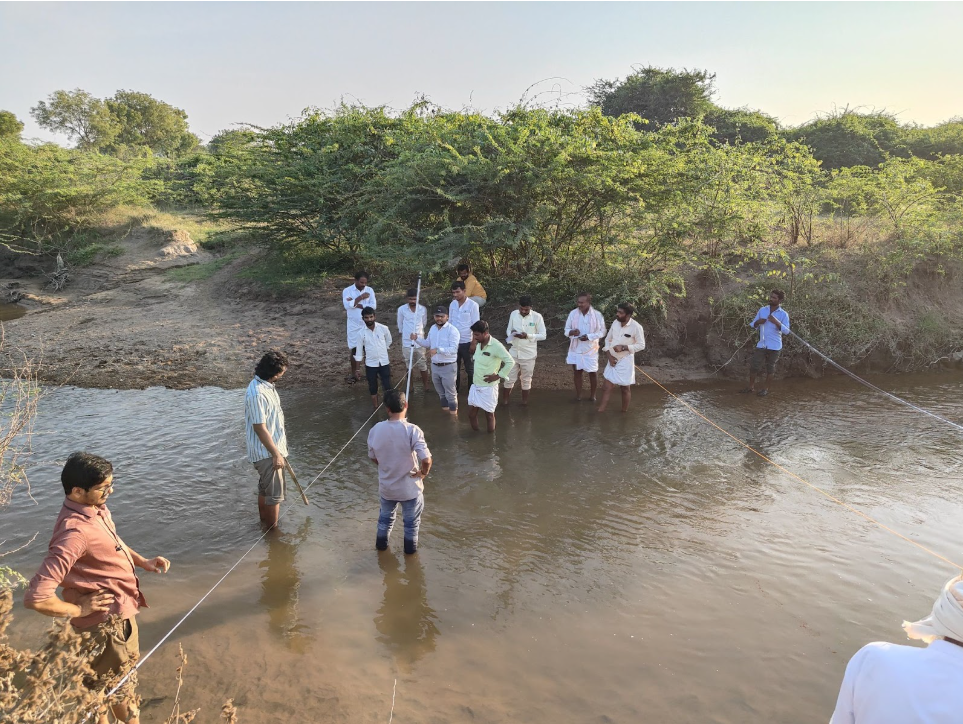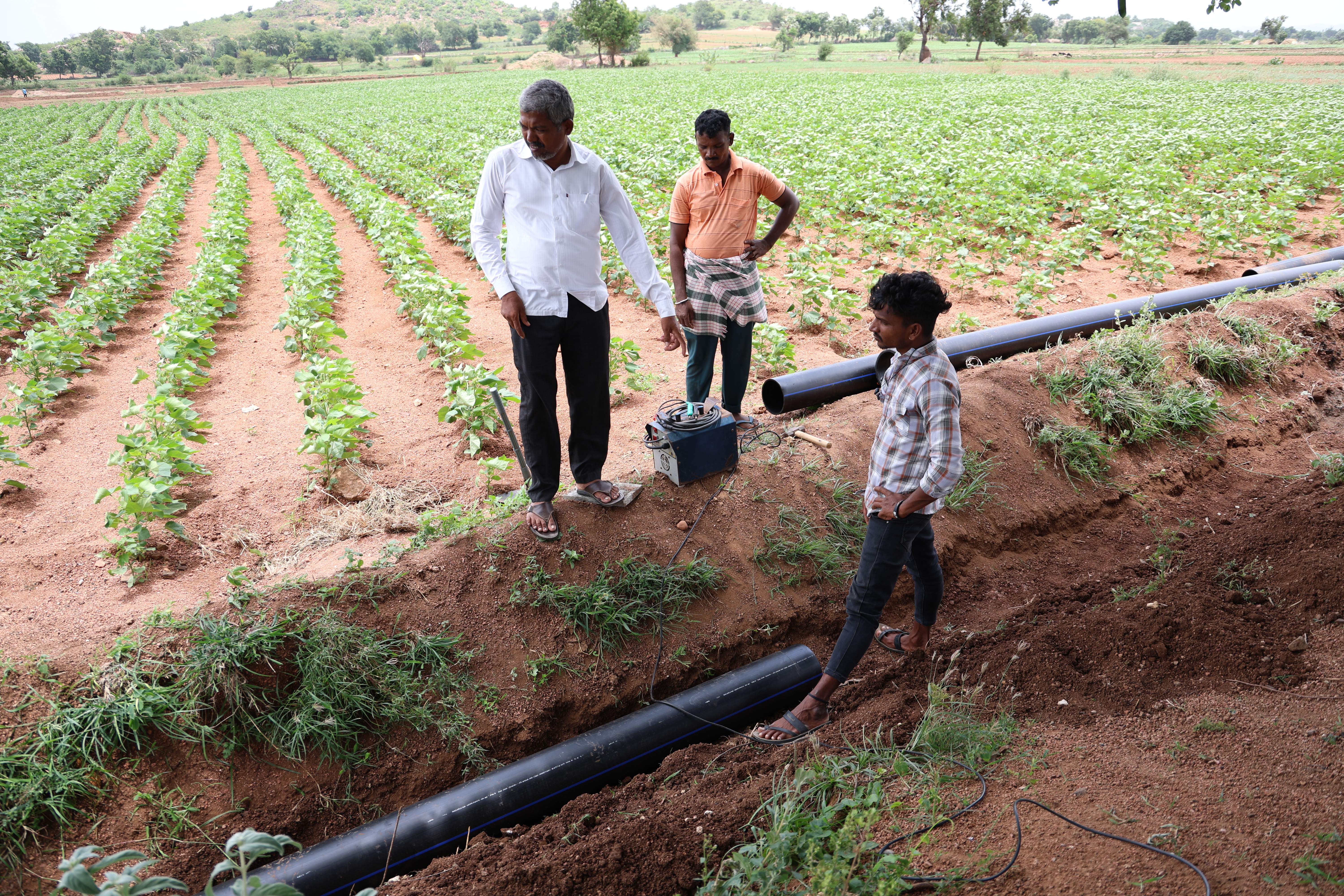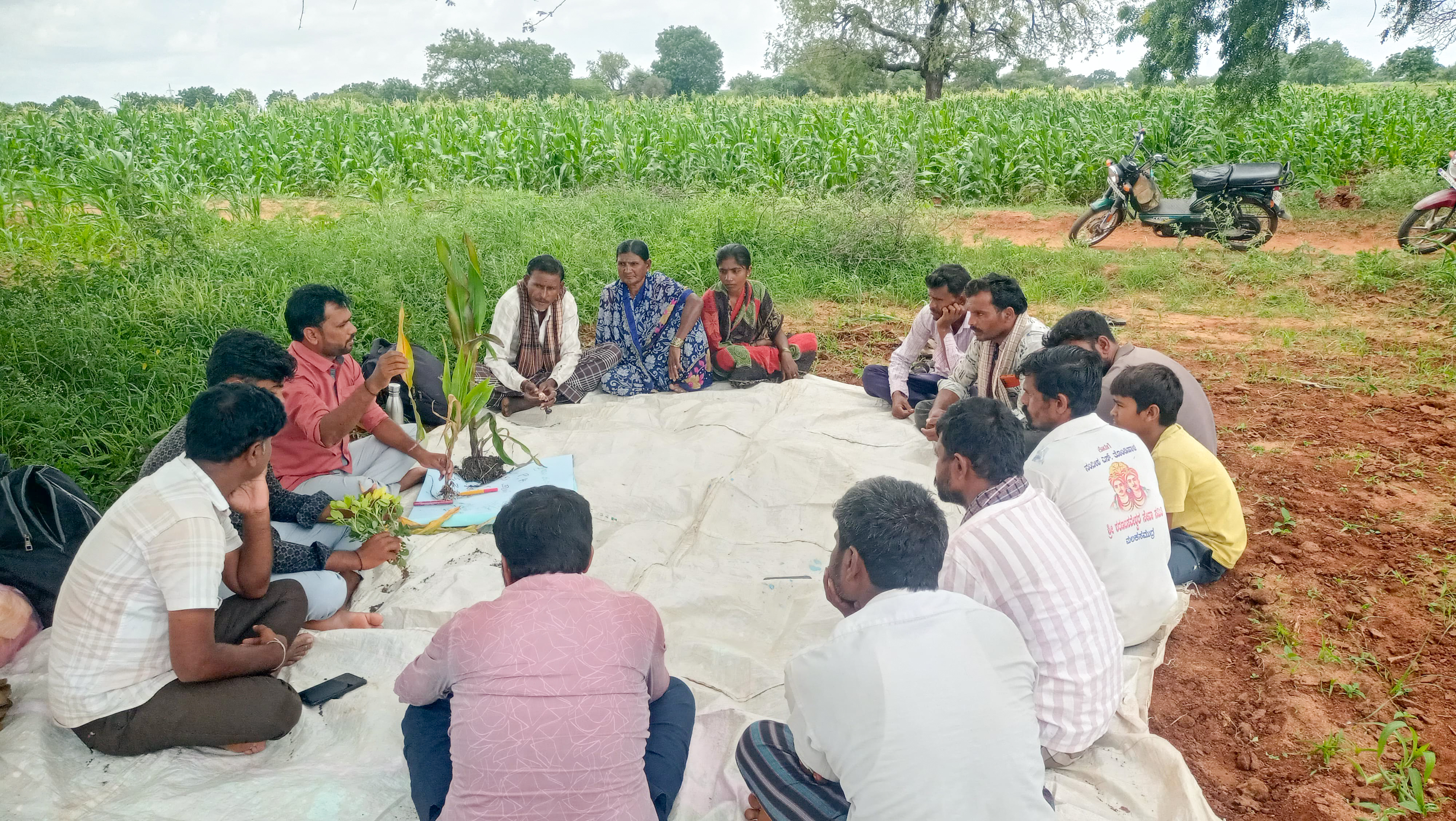In India’s Drylands, Young “Community Hydrologists” Are Leading Water Governance
Address structural inequalities
Build understanding
Devolve decision making
Invest in local capabilities
Organization: Water, Environment, Land and Livelihood Labs
2025 LOCAL ADAPTATION CHAMPIONS AWARD FINALIST
In the parched landscapes of India’s drylands, farming has always been a gamble with the rains. Nowhere is this clearer than in Karnataka’s Raichur district. Built to bring irrigation across the semi-arid Deccan plateau, the Narayanpur Right Bank Canal often runs dry before reaching villages in the Devdurga block. Tail-end farmers watch as water runs out before reaching their fields.
Groundwater, once a fallback, is also running out after decades of overuse and increasingly erratic monsoons. Climate change has turned rainfall into an unreliable partner—sometimes a sudden flood, other times a cruel absence. For the small and marginal farmers who anchor this region’s economy, every planting season comes with new uncertainty.
Raichur is a window into the larger crisis facing India’s drylands. Traditional systems of water governance have weakened, farmer cooperatives often struggle to function, and top-down irrigation schemes rarely account for local realities. How, then, can communities adapt to survive under climate stress?
The answer, in Devdurga, is emerging from within the community: train local youth to become Community Hydrologists.

This initiative, from Water, Environment, Land and Livelihood Labs (WELL Labs) and its partners, covers 17 villages and 4,200 sq km. It blends institutional strengthening, youth capacity-building, and service innovation to create a model for climate-resilient water governance.
These local youth are the sons and daughters of farming families who know the struggles firsthand. Armed with training in basic hydrology, water governance, and facilitation, 25 young people are now helping the 17 villages track rainfall, monitor canal flows, and make informed decisions about water. They translate science for everyday decisions.
A farmer can now ask, “Is there enough water for a second crop this season?” A Community Hydrologist runs the numbers, explains the risks, and helps the farmer decide. If a pipe bursts in the middle of the irrigation channel, the same youth, trained in repair and maintenance, can fix it.
By embedding hydrologists within their own villages, the project ensures that water knowledge stays in the community, is trusted, and is constantly put to use.

Reviving Local Institutions and Empowering Community Decision-making
Alongside training individuals, the initiative has revitalized Water User Cooperative Societies (WUCS), farmer-led groups responsible for irrigation management. Too often, WUCS across Karnataka have been inactive or under-resourced. The model breathes new life into them by embedding hydrologists, devolving financial power, and insisting on transparency.
When grants were secured by WELL Labs for pipe-to-field irrigation pilots, funds were deposited directly into WUCS accounts. Farmers themselves selected vendors, managed contracts, and verified expenses. Hydrologists ensured records were maintained and photographs documented the works.
Community groups are also testing soil moisture, monitoring and exploring regenerative farming practices, and linking water management with climate-resilient agriculture. Every measurement is tied to action. Hydrologists use rainfall and soil moisture data to develop participatory water budgets, which guide crop planning and irrigation turns.
The communities now see water governance as their responsibility.

From Local Solutions to Lasting Change
By training young Community Hydrologists, strengthening WUCS, and placing financial and decision-making power directly in the hands of farmers, the initiative demonstrates how communities can govern their own resources with transparency, creativity, and resilience.
Devdurga’s farmers and youth have shown that resilience is not just about coping with scarcity, bit also about strengthening local institutions, knowledge, and confidence, so that they endure.
The road ahead combines local ownership with systemic change. By linking youth-led services to farmer institutions, and farmer institutions to government frameworks, the initiative is showing how resilience can scale from a single village to an entire region. In this way, what started as a community experiment is fast becoming a blueprint for climate-resilient water governance in dryland farming systems worldwide.